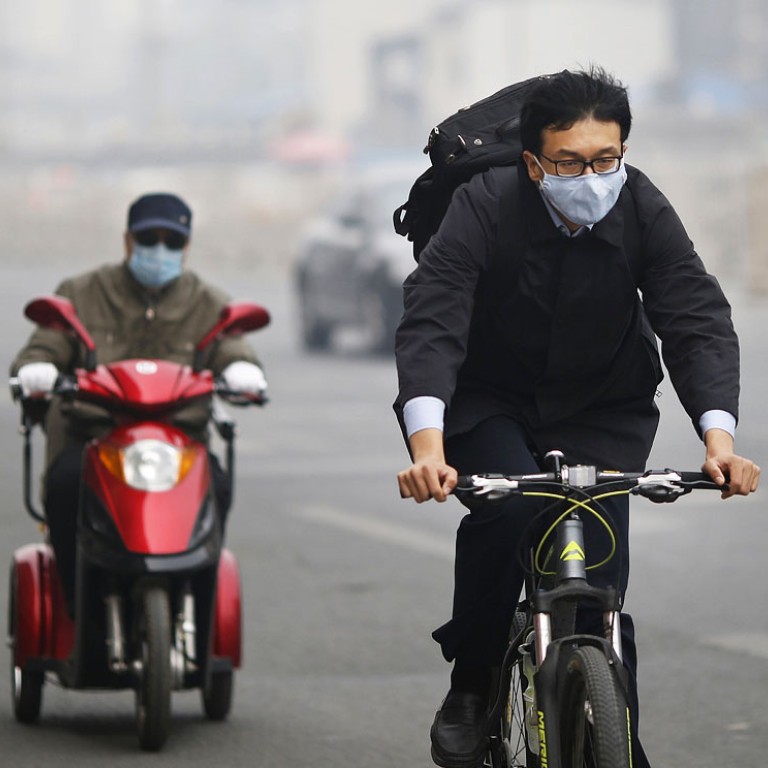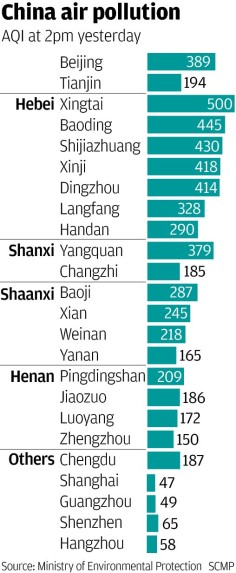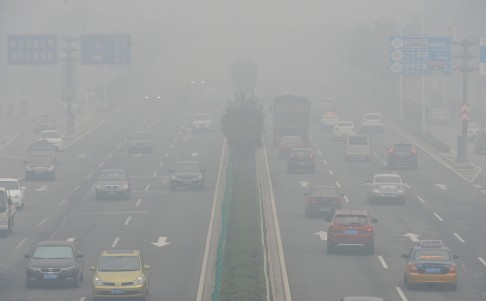
Orange pollution alert raised as Beijing smog reaches 'hazardous' levels
Pollution level at the highest – “hazardous” – level meaning air quality is a health threat to the entire population as roads are closed and schools told to limit outdoor activities
Thick smog blanketed Beijing for a second day yesterday, putting the city on a higher air pollution alert and forcing its dirtiest factories to cut fumes by 30 per cent.
The capital raised its pollution alert from yellow to orange - the second-highest level on a four-tier warning system - at about noon, with the contamination remaining hazardous throughout the day.
Beijing's official Air Quality Index reached 470 at 4pm. A reading of over 300 is considered severe pollution.
Toxic smog also blanketed nearby cities - mostly in Hebei and Shanxi provinces - including Xingtai , Shijiazhuang , Dingzhou and Yangquan . Eighteen highways linking Beijing, Harbin and Shanghai had to be closed, according to the China Meteorological Administration.
Watch: Beijing smog reaches 'hazardous' levels
Beijing is under tremendous pressure to tackle the haze, with the capital due to host a key political meeting in two weeks and the Asia-Pacific Economic Cooperation summit scheduled for early next month.
The municipal government convened an emergency meeting on Wednesday night to discuss ways to improve conditions.

Hebei provincial authorities also issued an orange alert for a second day as the AQI reading in Xingtai, in southern Hebei, exceeded the index's upper limit yesterday afternoon.
Beijing's Environmental Protection Bureau blamed "unfavourable" weather conditions and regional pollution. It said still air in the capital prevented the pollutants from dispersing, and more were drifting in from neighbouring Hebei, increasing the PM2.5 count in the city.
Burn-offs of crop stubble in rural Hebei, Henan and Shandong provinces worsened the smog, authorities said.
The Beijing authorities used social media to warn residents to take precautions, but few people on the streets were seen wearing masks. The capital's education bureau issued a notice to all primary and middle schools to stop all outdoor sporting activities.
Some residents wondered if the air would ever clear.
"It's the smog season of the year again. Now I wonder if I can live long enough to see it solved," Beijing resident Su Zhiyu, 32, said.

"If the government can't solve the problem for the residents, [we] should at least have a day off on smoggy days."
Environmental groups, including Greenpeace, criticised Beijing authorities for failing to put the city on red alert, the highest, to protect children vulnerable to pollution. Under a red alert, primary and middle schools suspend classes and at least half of the city's cars are taken off the road. Beijing has not issued a red alert since the warning system was introduced last year.
The dense pollution is expected to continue until tomorrow, when a cold front is forecast to clear up the smog.


